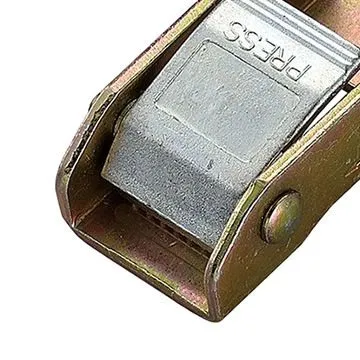8 月 . 13, 2024 19:26 Back to list
Effective Techniques for Installing Ceiling Grid Hanger Wire for Suspended Ceiling Systems
Ceiling Grid Hanger Wire An Essential Component for Suspended Ceilings
When it comes to constructing and designing suspended ceilings, the importance of reliable and robust components cannot be overstated. One of the most crucial elements in this system is the ceiling grid hanger wire, which plays a pivotal role in ensuring the stability and durability of the ceiling structure. This article delves into the significance of hanger wire in ceiling grid systems, its various types, installation techniques, and overall benefits.
Understanding Ceiling Grid Systems
Ceiling grid systems are often employed in commercial and residential spaces for aesthetic and functional purposes. They allow for easy installation of acoustic tiles, lighting fixtures, and HVAC systems while providing a clean, finished look. The grid structure typically comprises main beams and cross tees, suspended from the ceiling by hanger wires. These wires offer support and help distribute the weight of the ceiling tiles evenly, preventing sagging and displacement over time.
The Role of Hanger Wire
Hanger wires, often made from galvanized steel, are designed to provide tensile support for the ceiling grid system. They are usually installed in a grid pattern, spaced according to the ceiling's design and local building codes. The wires are attached to the existing ceiling structure or overhead beams using fasteners or anchors, while the other end connects to the grid.
The effectiveness of a suspended ceiling heavily relies on the proper installation and quality of the hanger wires. They not only support the grid but also help absorb vibrations and reduce noise levels, making them fundamental to the overall performance of the ceiling system.
Types of Hanger Wire
Hanger wires come in various types and sizes, allowing for flexibility in installation. Common materials used include
1. Galvanized Steel Wire The most prevalent type, known for its strength and corrosion resistance. Galvanized steel is ideal for both indoor and outdoor applications.
ceiling grid hanger wire

3. Fiberglass Wire In settings where electromagnetic interference is a concern, fiberglass wires are used due to their non-conductive properties.
The choice of wire will largely depend on the specific requirements of the project, including load-bearing capacity and environmental factors.
Installation Techniques
Proper installation of hanger wires is crucial for the success of a suspended ceiling. Here are some general steps
1. Planning Before installation, it's essential to plan the layout, ensuring that the grid lines are level and correspond to the desired ceiling height.
2. Cutting and Measuring Accurate measurements should be taken to cut the hanger wire to the necessary lengths. Remember to account for adjustments based on the type of ceiling tiles being used.
3. Securing to the Structure The installation of anchors or fasteners must be done securely to the overhead structure before attaching the wires to the grid.
4. Attaching to the Grid Once the wires are in place, they should be connected to the main beams of the grid system, ensuring that they are tightened adequately to minimize movement.
Benefits of Using Hanger Wire
Using quality hanger wires in a ceiling grid system offers numerous benefits. It ensures the longevity of the suspended ceiling, providing consistent support across its surface. Moreover, it enhances aesthetic appeal by maintaining a clean look, free from sagging areas. Lastly, these systems can significantly improve acoustic performance, making spaces more comfortable and functional.
In conclusion, ceiling grid hanger wire is more than just a supporting element; it is essential for creating reliable and effective suspended ceiling systems. By understanding its role, types, installation methods, and benefits, builders and designers can ensure that their ceilings are not only visually appealing but also structurally sound and functional. Whether in commercial or residential construction, the significance of reliable hanger wire cannot be underestimated.
-
Revolutionizing Interior Design with Ceilings t grid Suspended SystemNewsOct.29,2024
-
Revolutionizing Ceiling Design with ceiling access panel with Gypsum Tile WaterproofNewsOct.29,2024
-
Revolutionizing Interior Design with PVC Gypsum Ceiling: A Comprehensive GuideNewsOct.29,2024
-
Elevating Interior Design with High quality Mineral Fiber Ceiling TilesNewsOct.29,2024
-
Revolutionizing Interior Design with PVC Gypsum Ceiling: A Comprehensive GuideNewsOct.29,2024
-
Elevating Interior Design with High-Quality Mineral Fiber Ceiling Tiles: A Comprehensive GuideNewsOct.29,2024







